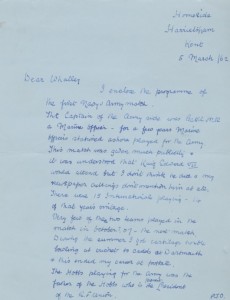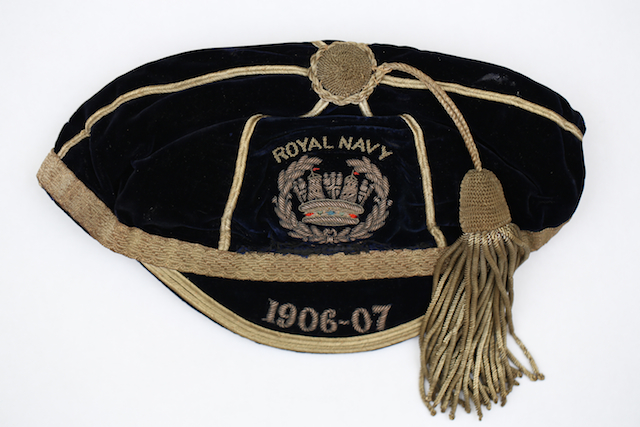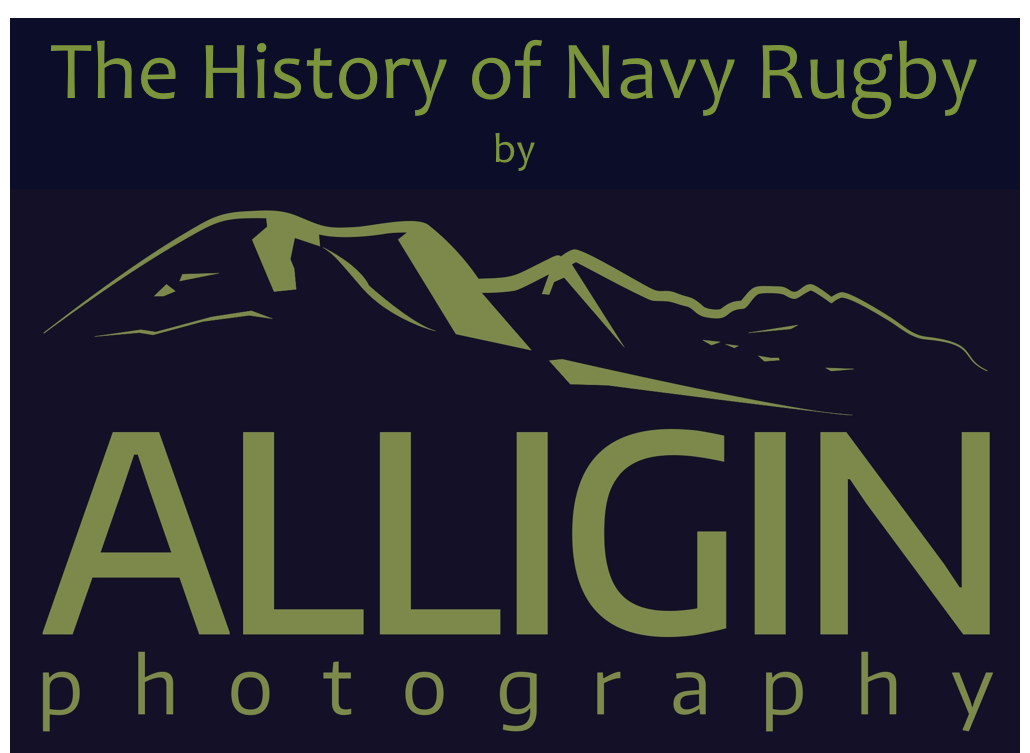Navy Rugby by Alligin Photography will be producing articles about what it considers to be the three ‘first matches’ between the Navy and the Army. The three matches are as follows:
The First ‘First’ Match 1878. A game billed as the Navy v Army played at the Kennington Oval for the Military Benevolent Fund was published on 18 April 2013
1907- the second ‘First Match’. This game was promoted by the newly formed Royal Navy Rugby Union and the Army Rugby Union as ‘Officers of the Navy’ v ‘Officers of the Army’. Ratings and Other Ranks were not eligible to play.
The match was played at Queen’s Club who lent their ground for the occasion with the Army having eight internationals in their side. Kick off was 14:45 with the 1st (King’s) Dragoon Guards’ band playing before hand. The Officers of the Royal Navy made a late change with Picton replacing C.C. Dix in the forwards.
It was reported in the Times that “It is much to be hoped that the game will become an annual one, for in future years, if played earlier i the season, it might well come to be regarded as an international trial.
The Army led the match at half time through a try and penalty goal to the Royal Navy’s single goal (converted try). However after the break the Royal Navy scored two more goals to take a decisive lead. In the final quarter the Army staged a strong come back with two late tries. They were able to convert the first but missed (the easier) second to lose the match by a single point 15-14. It was said that the Royal Navy’s victory owed much to many of their players being used to playing with each other at US Portsmouth. Also it was felt that a combined Army Navy side, selected from the match, would probably have beaten England. (match reports sourced from the Times – date 28 February 1907) – a fuller account is reproduced below.
1920 – the third ‘First Match’. At last the ‘Royal Navy’ v ‘The Army’. The first match where both sides were able to select from all their personnel. This match was the first Inter Service match played at Twickenham and was attended by King George V.
So 29 years after their first encounter and with both sides having formed themselves in to “Unions” they met once more.
Geraint
1907 Navy v Army Match
The match, as billed upon the two pence official card below, is considered by many to be the first official match between the Royal Navy and the British Army. It was, by all accounts a thrilling game, which befits its place in what was to grow into today’s Army Navy game, played at the home of English Rugby in front of a crowd approaching 70,000.

Since the first encounter of 1878 much had changed in how the Game was played. Playing formations had evolved and were closer to that of today with both sides playing eight forwards, two half backs, 4 three-quarter backs and a back. However both packs scrummaged in a 3-3-2 formation i.e. two players packing down behind the locks, with one player in today’s flanker position. The Navy that day played in “Dark Blue” the Army were in white. The Navy were able to field six internationals including their captain Ernest Roberts whilst the Army fielded ten including their captain Basil Hill, the first Serviceman to captain England. As a member of the Royal Marine Artillery Basil Hill could easily have been playing on the other side. Instead he went on to represent the Army on the Rugby Football Union and eventually became RFU President.
The Teams
| Navy | Position | Army |
|---|---|---|
| Lyon G. H. [England] | Backs | Grischotti W. |
| Lapage W. N. [England] | Three-Quarter Backs | Wilson W. C. [England] |
| Start S. P. [England] | de Smidt A. G. C. | |
| Orr H. J. [Scotland] | MacLear B. [Ireland] | |
| Moir D . F. | Newton A. W. [England] | |
| Noble P. L. H. | Half Backs | Caddell E. D. [Ireland] |
| Ede E. G. | Robbinson T. T. H. [Ireland] (See Note 2) | |
| Wilson F. O'B. | Forwards | Turner F. H. |
| Brown H. | Bond J. R. B. | |
| Abercrombie C. H. [Scotland] | Simson J. R. | |
| Picton A. L. (See note 1) | Gowlland G. C. [Scotland] (See Note 2) | |
| Cox R. D | Dobbs G. E. B. [England] | |
| A. R. Palmer | Partridge J. E. C. [South Africa] (See Note 3) | |
| Roberts E. W. (Capt) [England (C)] | Hobbs, DSO R. F. A. [England] (See Note 3) | |
| Austin F . M. | Hill B . A. (Capt) [England] | |
Notes:
1: Appeared in the match card as C. C. Dix
2: Incorrect initials appeared for Robinson and Turner in the official match card and Gowlland’s name was spelt with only one ‘l’
3: Neither Partridge or Hobbs were current internationals both playing their last international match in 1903.
The Match
Despite having lost the previous year to the Navy at Devonport the Army went in to the match as slight favourites probably due to five of their pack being internationals along with the scrum half, the fly half and three of the four three quarters. However the bookmakers had probably not factored in the very essence of what has made the Army Navy match so special over its long history, at least for the Navy’s supporters. It is probably best described by a future Navy and England Captain, WJA Davies in his book Rugby Football and How to Play It (1924):
“I remember a very enthusiastic Navy supporter eulogizing the prowess of the Navy to a keen Army Rugby footballer, stating that he could produce fifteen players from the Navy on the first Saturday in March who would hold their own with the Army team, even if they hadn’t kicked a Rugby football before that season.
The keenness between the two Services on a Navy v. Army match day grasp’s one’s imagination so completely, that the Navy team always seems to rise to sufficient heights to win.”
At the time of course the Navy held an over all winning record against the Army. Although that is no longer the case I still believe that history has shown that the Navy team, through the ages, has lifted its game when playing on the famous Twickenham turf.
In the 1907 game the Navy turned around at half time 6 – 5 down. Their converted try being in response to the Army’s unconverted try and penalty goal. In the second half the Navy were able to score two more converted tries with the Army scoring their own converted try to leave the score at 15-11 to the Navy as the match entered its final throws. By all accounts a couple of missed tackles allowed Ireland international Basil Maclear through the Navy line to score a try and bring the match score to 15-14 with their captain, Basil Hill’s conversion to come. History records that the kicked was missed and the Navy had won the first official match between themselves and the Army.
Not only was the match exciting but it also seemed to be of a high standard because as McLaren recounts in his book the correspondent for the Times observed:
“Certainly a team chosen from the Army and the Navy would in all probability defeat any team England could put in the field at the moment.”
The Time Correspondent almost had his wish the following year when eight of the side were part of the ‘first Combined Services ‘ team that played the touring Australians at US Portsmouth’s ground and narrowly lost 8 – 6. But that is a future story.
The Navy centre that day was Sydney Start who played scrum half for England and went on to become a Selector and a Secretary of the Royal Navy Rugby Union before becoming their first Life Member in 1929. He clearly had a keen regard for history because in 1962 he wrote to the RNRU to ensure they had a brief account of the match. Some of his letter is reproduced below.
Letter from Rear Admiral Sydney Start

The captain of the Army side was Basil Hill a Marine Officer – for a few years Marine Officers stationed ashore played for the Army. This match was given much publicity & it was understood that King Edward VII would attend but I don’t think he did & my newspaper cuttings didn’t mention him at all. There were 15 internationals playing – 14 of that year’s vintage.
Very few of these two teams played in the match in October? 07 – the next match. [Actually Dec 07 – Ed] During the summer I got cartlilage trouble bowling at cricket to cadets at Dartmouth & this ended my career at football.
The Hobbs playing for the Army was the father of the Hobbs who is the present President of the R.F.Union.
It was a magnificent match & the result depended on the Army’s kick at the goal in the last minute. If Hill converted a try the Army won – if he failed the Navy won & we were pleased that the latter happened – the whistle then went for time.
He goes on to say
The Captain of the Navy side – Roberts was one of the main factors in the forming of the Sports Control Board & its first Secretary – he & Captain Watson (Admiral Sir Hugh Watson – 1st Director of RNSCB) were in the same ship towards the end of the first world war & it was here that they discussed the planning of it.
In Sydney Start’s letter (above) I believe he missed off Partridge in his count of fifteen internationals as I believe that there were sixteen international players at the time of the match. John McLaren, in his book, the History of Army Rugby, makes note of seventeen internationals. I believe this refers to Fred Turner. In my team sheet listed above Fred is not shown as an international but he went on to win 15 caps for Scotland between 1911 and 1914.
Navy Caps
The match in February 1907 was the first match where the Royal Navy Rugby Union awarded caps. However this was not determined before the game. The meeting in December 1907, which saw the formulation of the Royal Navy Rugby Union Central Committee, was also the meeting that formed the Rules of the Union, one of which was to award a cap for the match against the Army.
Rule 7) CAPS shall be of Dark Blue Velvet trimmed with silver, and having a naval crown and wreath on the front.
With this meeting being held on the day of the second match between the Navy and Army (18th December 1907) caps were not presented at that match either. In January 1908 the Central Committee published a list of those Navy players entitled to wear the ‘Naval Cap’

It is notable that Lieutenant Dix Royal Navy appears even though he didn’t play in the match of 1907 or indeed any other. Consequently I have included Engineer Lieutenant A. L. Picton Royal Navy in my list of capped Navy players (No 11) but have not included Dix.
The first match at which caps were presented was the Navy v Army match held on 4th March 1911. In my list of capped Navy Players I have used the above list to give the starting order of Navy Capped players. Ernest Roberts is registered as the first capped player by dint of being captain that day and then number 2 is Lyon, followed by Lapage etc. Similarly Greig is promoted above Biggs as it was Greig who captained the team on the second occasion that they played.

US Portsmouth 1907 & Portsmouth Navy 1878
In the article on the first win in 1878 I made reference to the captain, Henderson, being part of the very successful Portsmouth Navy team that went unbeaten in the 1878/79 season. Under the guise of the US Portsmouth Club (formed in 1882) there is a remarkable link and similarity around the match of first match of 1907.

The above United Services Football Club results card show a loss to Old Merchant Taylors on 24th March 1906 by 24 points to ten. They then go unbeaten for the next two seasons. In the 1906/07 season their single blemish was a draw with London Hospitals whilst in 1907/08 they were unbeaten. This sustained winning record produced 907 points for whilst conceding only 175.
Article sourced and researched from the hand written minute book of the Royal Navy Rugby Union and other correspondence,WJA Davies’ book Rugby Football and How to Play It, John McLaren’s book “The History of the Army Rugby Union and the Army Rugby Union website by Geraint Ashton Jones
